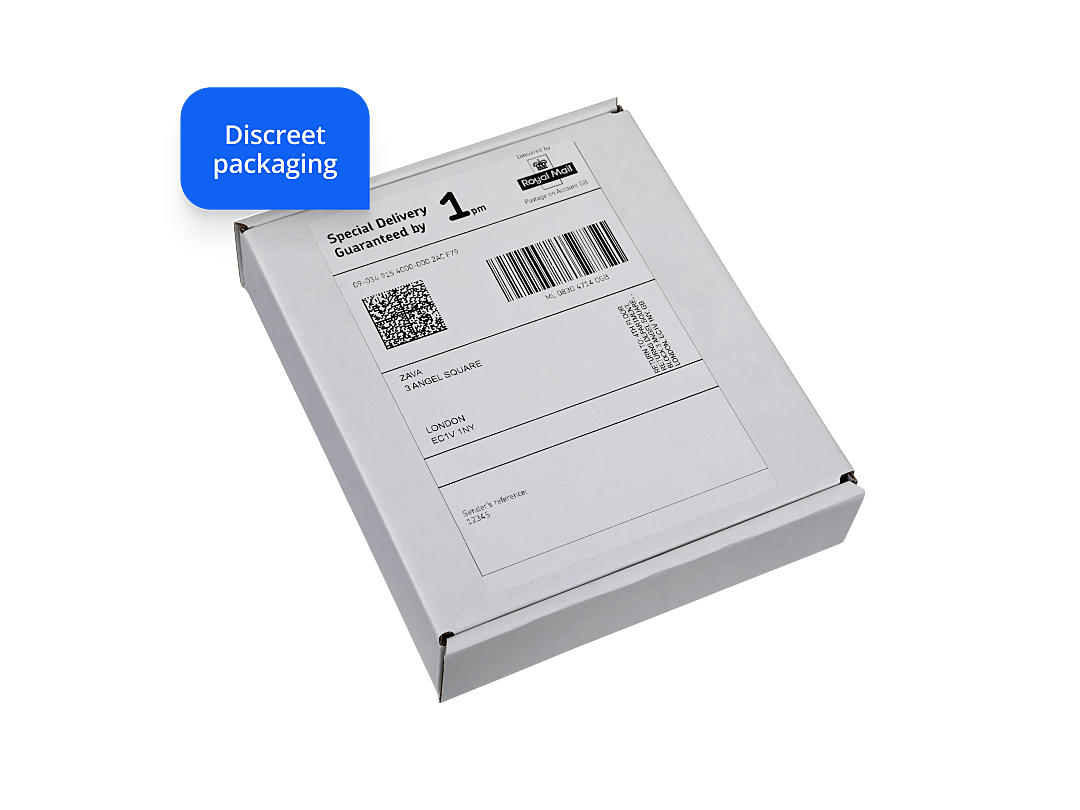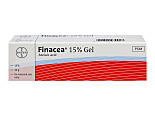



Prices from £22.99
In stock. Simply fill in a brief consultation questionnaire and one of our doctors will review your request today.
-
Finacea (azelaic acid) gel is a medicine used to treat the symptoms of rosacea. Rosacea is a long term skin condition that causes flushing, redness, and irritation around the face.
Please note, when you request a generic (non branded) treatment, the product you receive may look slightly different than what we show on our website. The active ingredient in the medication will be exactly the same though. This is because we use a range of manufacturers to ensure we always have enough stock for patients. If you have any questions, you can message our Patient Care team or doctors through your account.



About Finacea Gel
-
-
Rosacea is a very common skin condition, but it’s still not properly understood. It can cause a range of symptoms, but usually affects people around the face (nose, cheeks, and eyes). Rosacea isn’t a contagious infection, which means that you can’t pass it between people.
It’s virtually unknown for rosacea to cause permanent skin damage or scarring. However, it is a chronic condition. This means that people with rosacea can have times when their symptoms are worse, and periods where they do not have symptoms. You could have a few months of flushing and skin irritation, and years before your next outbreak.
-
-
- Flushing (temporary blushing of the face, neck or chest, sometimes with a hot feeling)
- Erythema (patches of redness that don’t go away quickly)
- Acne-like bumps or swelling (papules and pustules)
- Thickening of the skin
- Dry, itchy or rough skin
- Swelling around the face
- Burning, itchy or painful skin
-
-
No one knows exactly what causes rosacea. However, there are certain things which are been reported as making rosacea symptoms worse, like:
- stress
- changes in weather (extreme light, hot or cold, or windy)
- alcohol
- caffeine
- dairy
- menopause
Talk to your nurse or GP if you think you might have rosacea. There are a number of treatments available to help keep your symptoms under control.
-
-
Anyone can get rosacea, but it’s most common in:
- people over the age of 30
- people with fair skin
- women
It’s not very common in children or adolescents.
The best way to diagnose your rosacea is by visiting your local nurse or GP, who will ask you about your medical history, signs and symptoms, and potential triggers.
-
-
Because no one knows exactly what causes rosacea, there is currently no cure. However, there are medications available which help to keep the symptoms under control or at bay, including:
- self-help (washing your face regularly with sensitive products, and avoiding known triggers)antibiotics
- laser treatment (which can be expensive)
- topical treatments (creams or gels)
Your nurse or GP will help you decide which form of treatment is best for you.
-
-
Finacea (azelaic acid) gel and Metronidazole 0.75% gel are two types of topical treatment for the symptoms of rosacea. Both are applied in the same way: directly to the affected areas of skin.
The main difference between the two gels is that Finacea (azelaic acid) gel is thought to be slightly more effective, but also more likely to cause side effects (like skin irritation) than Metronidazole 0.75% gel.
-
-
Mirvaso is another topical treatment, however it is used specifically to treat people who have rosacea that presents more with flushing and erythema. Finacea gel should be used to treat rosacea if the main symptoms are papules and pustules (acne-like).
-
-
Soolantra is another treatment used on the skin to help rosacea. Like Finacea, it helps to treat spots and inflammation of the skin caused by rosacea. Soolantra is a newer type of rosacea treatment, and has been shown to be more effective than other topical treatments at controlling the symptoms of rosacea.
-
-
You would use Finacea (azelaic acid) gel if you wanted to treat your external symptoms of rosacea. Use it exactly as you are told to by your prescribing nurse or GP. Using the gel too often can make your symptoms worse.
-
-
Finacea (azelaic acid) gel is antibacterial. It works mainly by unclogging the pores on your skin, and relieving inflamed papules and pustules on your skin, which could be caused by acne or rosacea.
-
-
For rosacea: the gel typically takes around 4 weeks to work. This varies from person to person. However, if your symptoms don’t change after 2 months, check with your prescribing nurse or GP.
-
-
Finacea (azelaic acid) gel is one of the most popular treatments for the relief of mild acne and the symptoms of rosacea. If used correctly, it can be very effective.
-
-
Yes, Finacea (azelaic acid) gel can be used by both men and women.
-
-
You should only use Finacea (azelaic acid) gel if it’s been prescribed to you by a registered nurse or doctor. You should rub it in on the outside of your skin, only in the areas that are affected.
-
-
Finacea (azelaic acid) gel isn’t recommended for use in children under the age of 12. You shouldn’t ever use it if you are allergic (hypersensitive) to its listed ingredients.
If you are pregnant, check with your nurse or doctor before using the gel. Avoid applying the gel to your nipples or breasts if you are currently breastfeeding.
-
-
This depends on the severity of your symptoms, and varies a lot between people. Usually, it is used as a short-term solution (over several months), while your symptoms are particularly bad.
-
-
Only use Finacea (azelaic acid) gel for as long as you’ve been told by your prescribing nurse or GP. Stop using it sooner if you experience any unpleasant or severe side effects, or an allergic reaction.
-
-
Keep your medication safely out of the reach of children, and don’t use it beyond the expiry date written on the tube and carton.
-
-
It’s only safe to use if you’ve been prescribed it by a registered nurse or GP.
-
-
- Burning, itchy or painful skin
- Rash
- Tingling, numb or dry skin where applied
Rare side effects
- Allergic reaction (swelling of the eyes, face and throat)
- Hives
- Abnormal skin reactions (like scaly skin, extreme redness, changes in colour)
- Increased asthma symptoms
-
-
There have not been any reports of interactions between Finacea gel and other medicines.
-
-
Only use Finacea (azelaic acid) gel as you have been told to by your prescribing nurse or GP.
Apply 0.5g (about 1 inch) of gel twice a day to the affected areas of skin. Make sure that your skin is properly clean beforehand, and wash your hands after applying the gel.
-
-
You shouldn’t increase your dosage without first talking to your nurse or doctor. If you miss a treatment, don’t use twice the amount the next time, to make up for it.
-
-
The active ingredient is azelaic acid.
The other ingredients are: benzoic acid (E210), lecithin, disodium edetate, carbomers, propylene glycol, sodium hydroxide, polysorbate 80, triglycerides medium chain, and purified water.
-
-
Finacea (azelaic acid) gel is only for external use. Never apply it internally (for example in the mouth or eyes), or to broken or damaged skin.

Dr Kathryn Basford is a qualified GP who works as a GP in London, as well as with ZAVA. She graduated from the University of Manchester and completed her GP training through Whipps Cross Hospital in London.
Meet our doctorsLast reviewed: 13 Jun 2019
-
Finacea® 15 % Gel, Patient Information Leaflet, EMC [accessed February 2023]
-
Azelaic acid 15% gel in the treatment of rosacea, Expert Opinion on Pharmacotherapy [accessed February 2023]
-
Rosacea, National Health Service [accessed February 2023]
-
Rosacea, NICE/British National Formulary [accessed February 2023]
-
Azelaic acid, Patient [accessed February 2023]
There are a range of gels and creams which can significantly reduce the symptoms of rosacea. While some treatments reduce inflammation and kill the bacteria that cause spots, others act on your blood vessels to reduce them in size and make them less noticeable.








